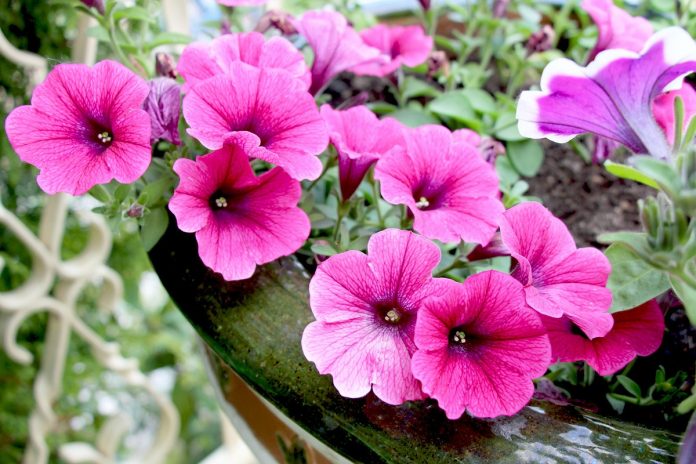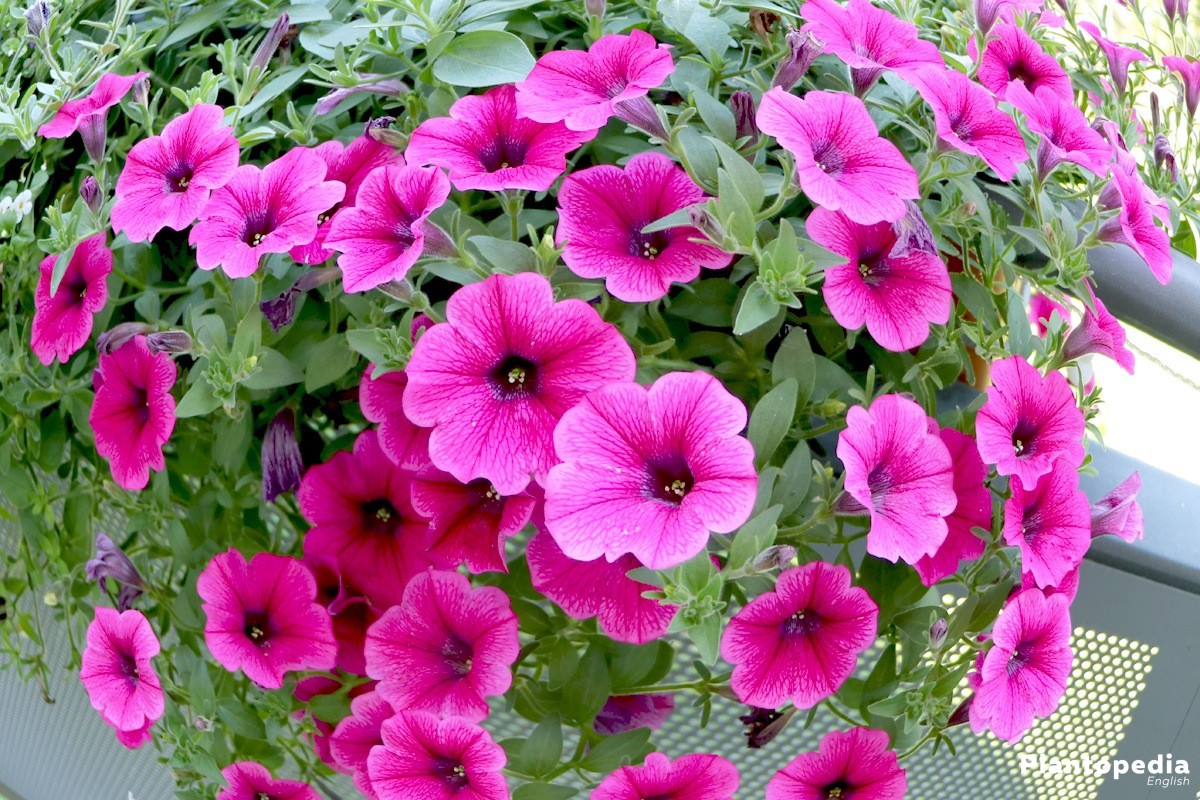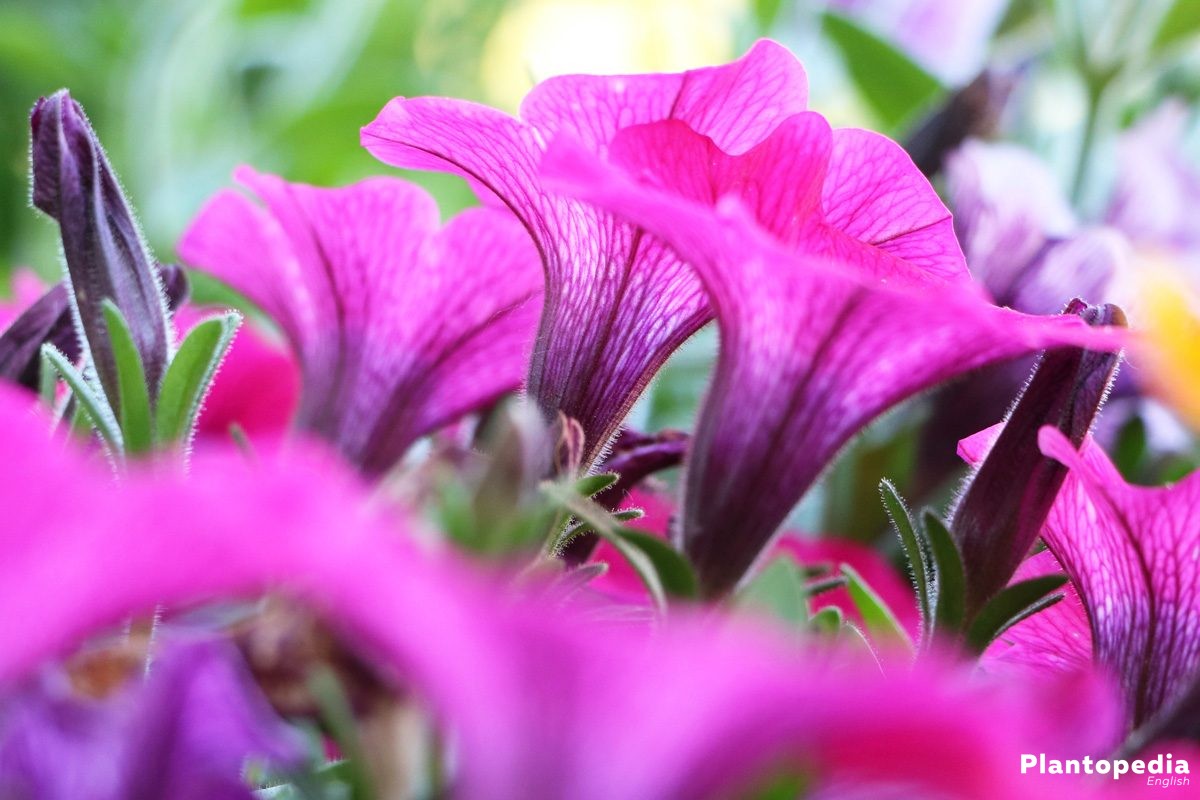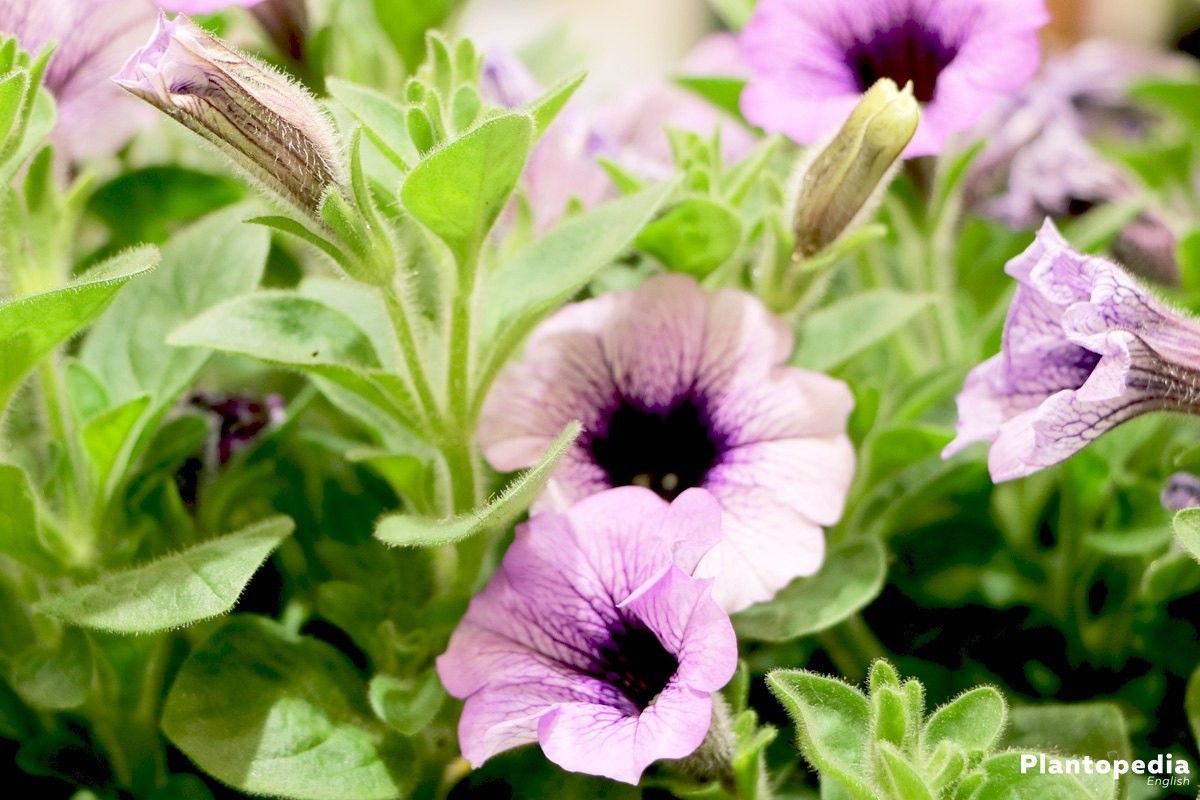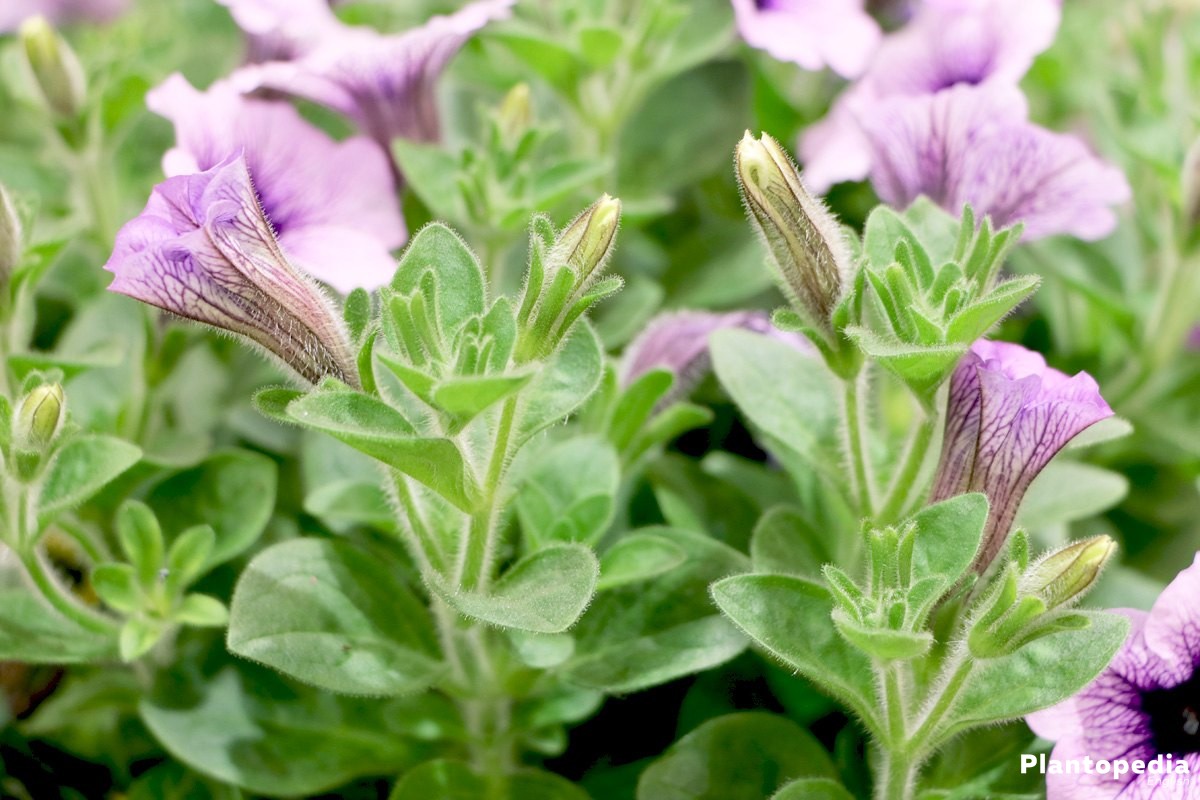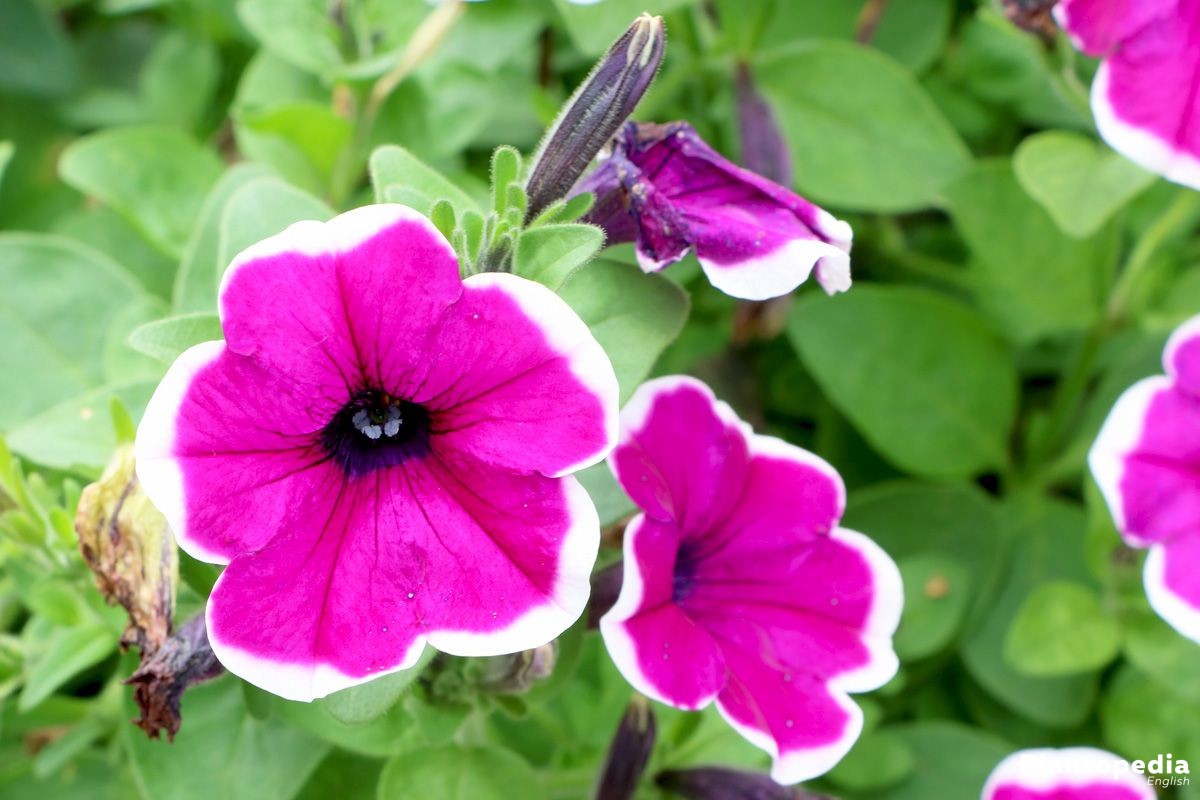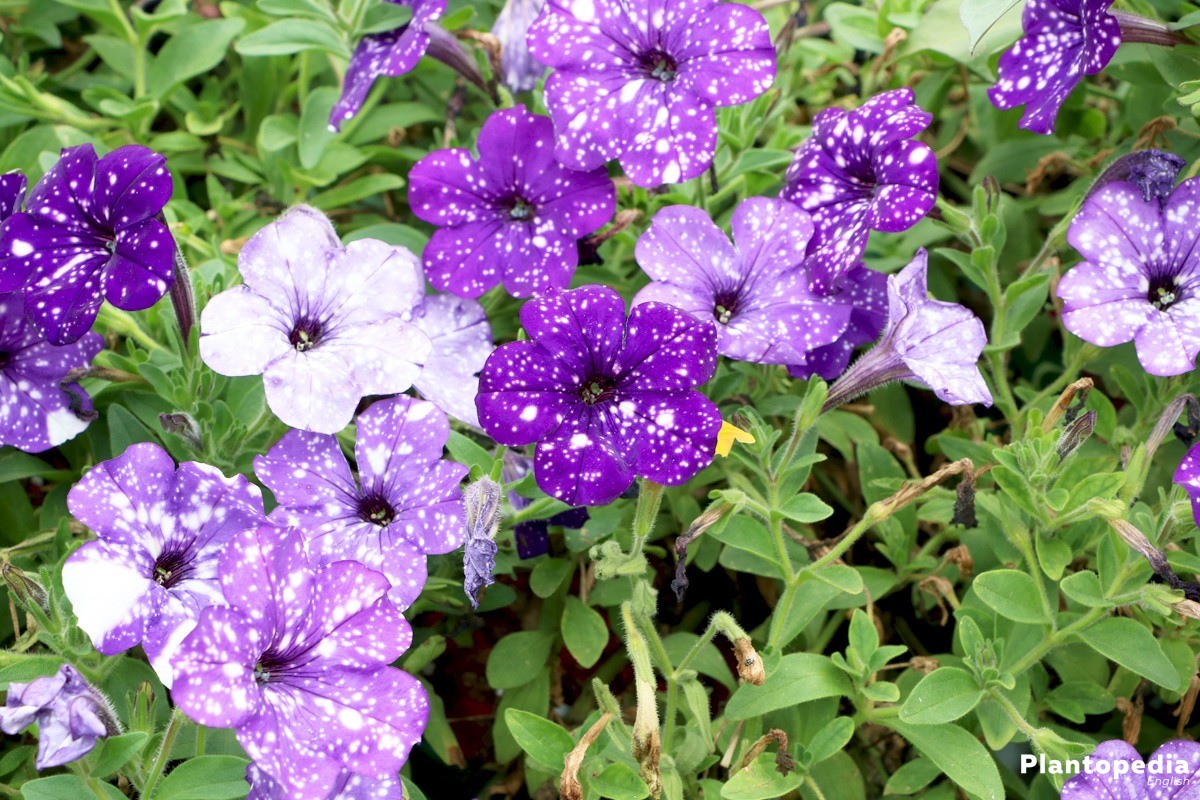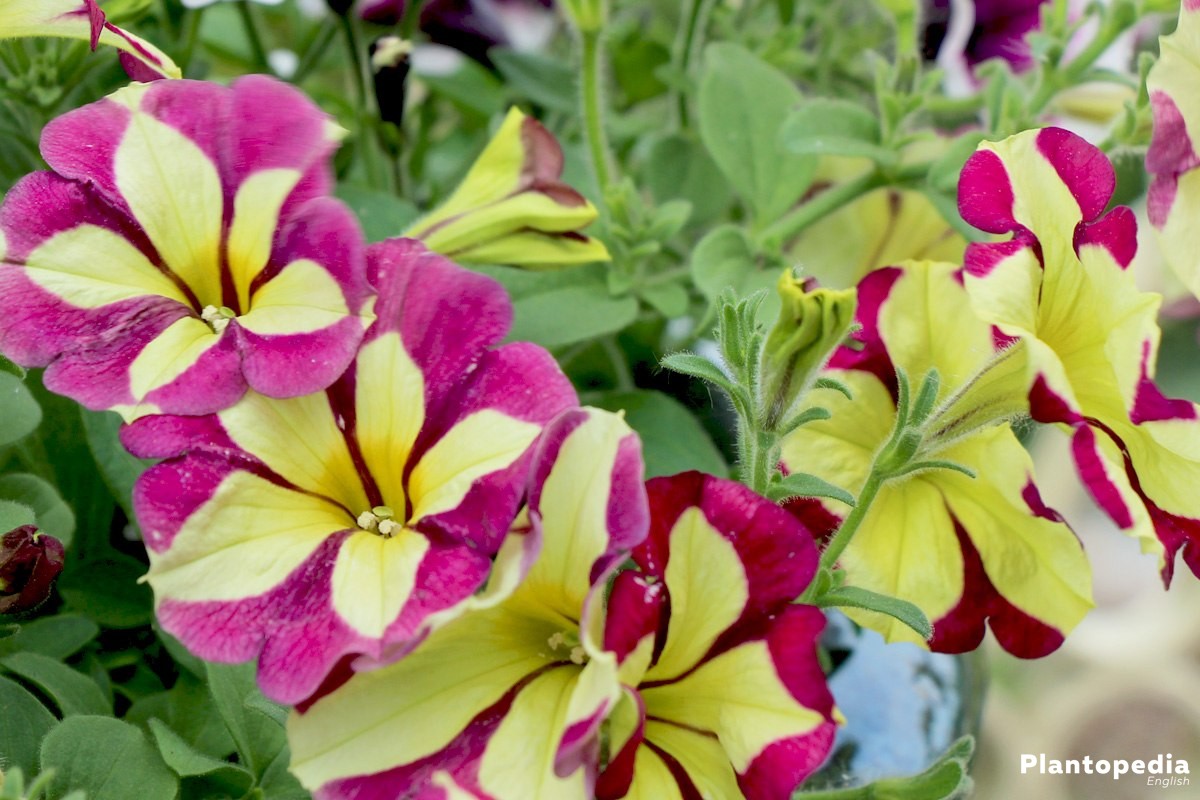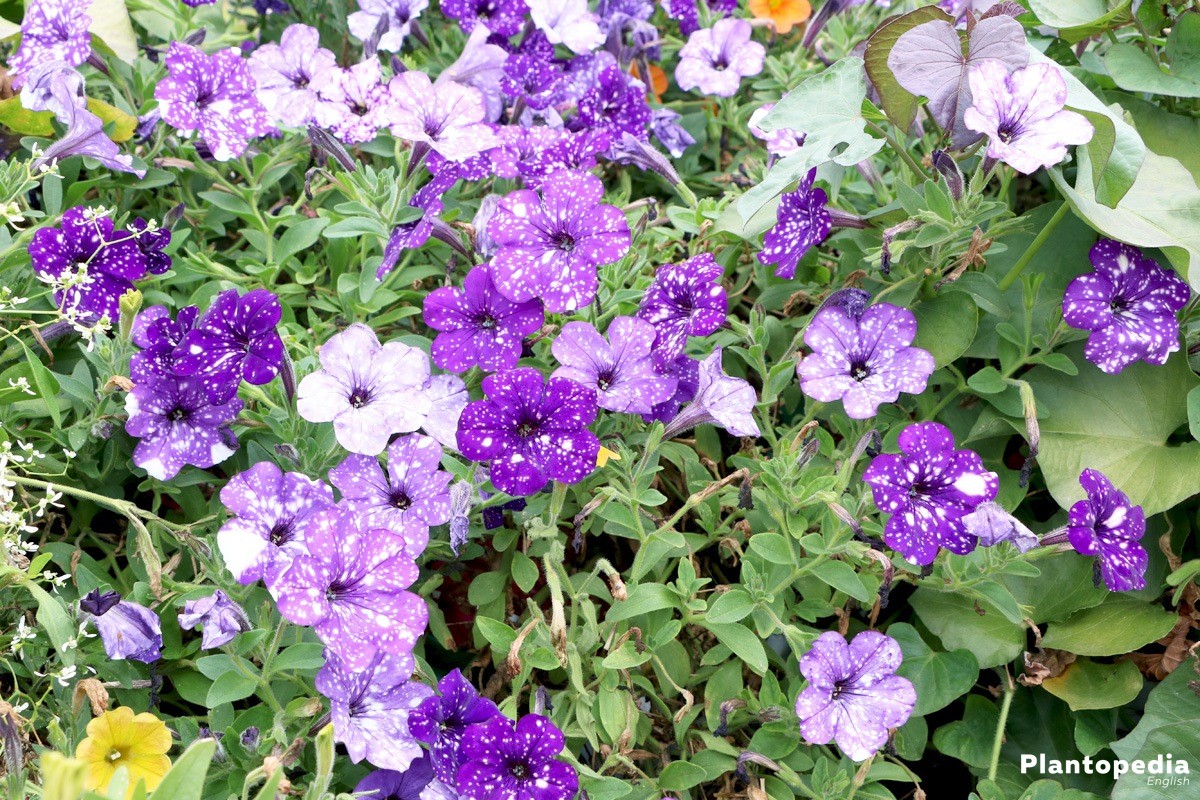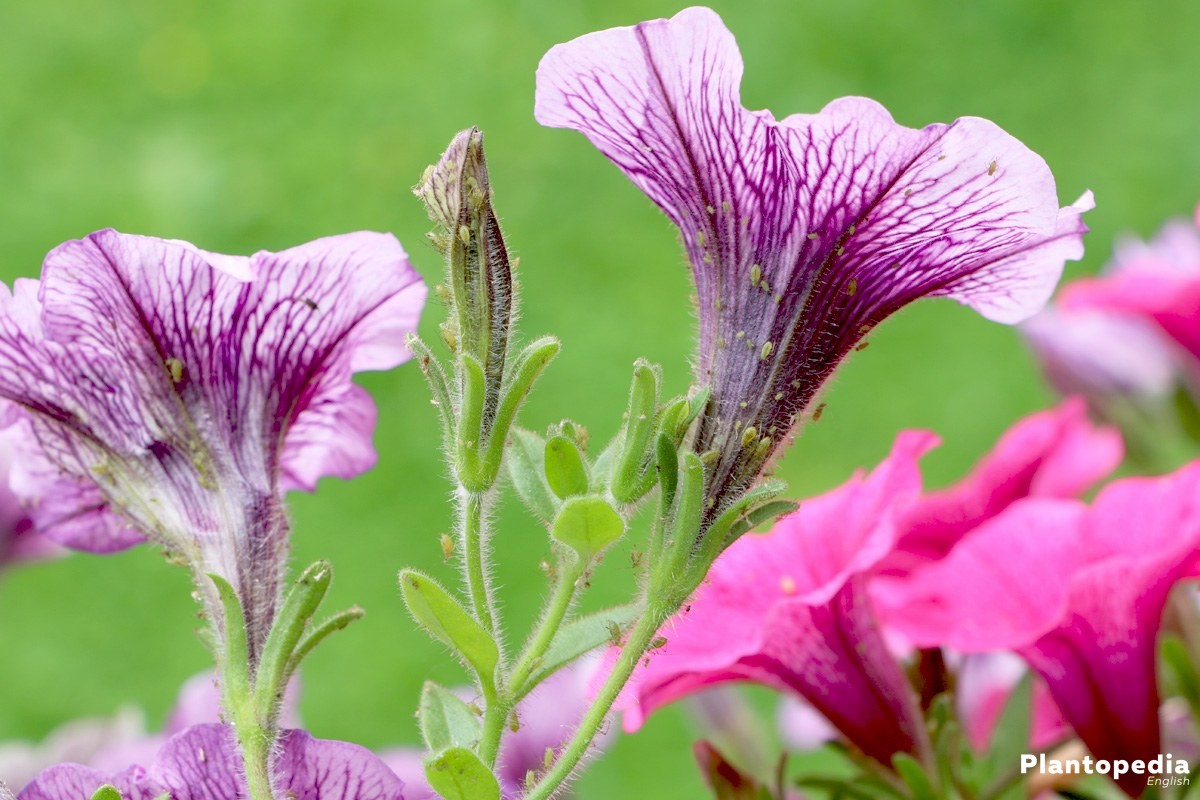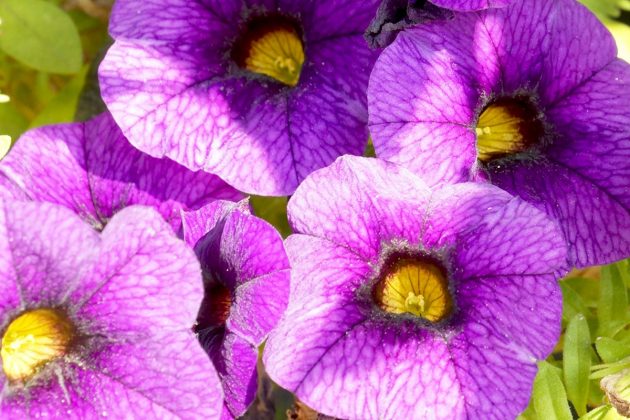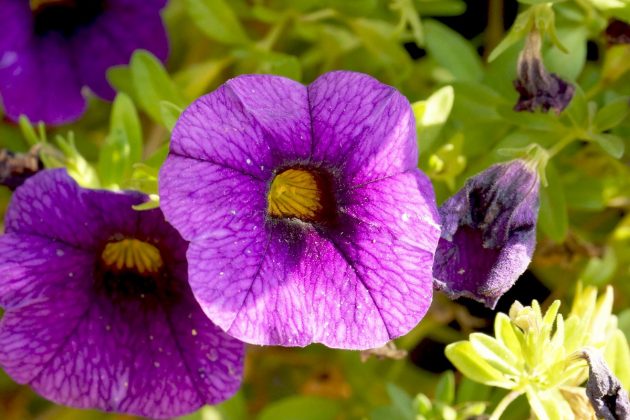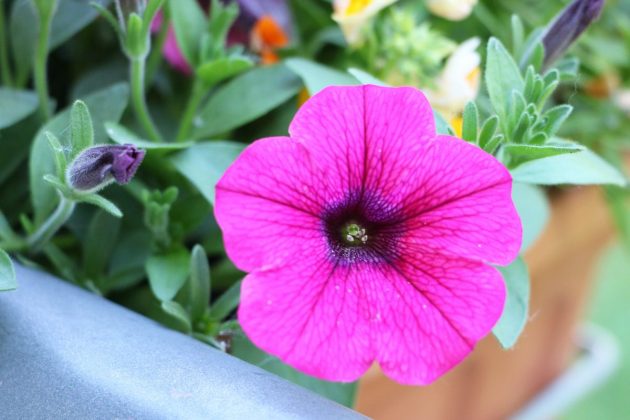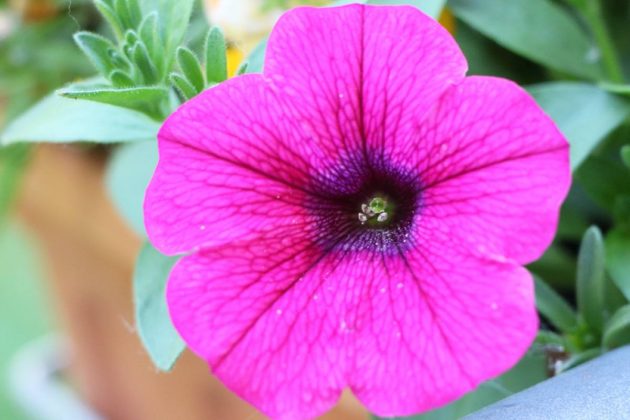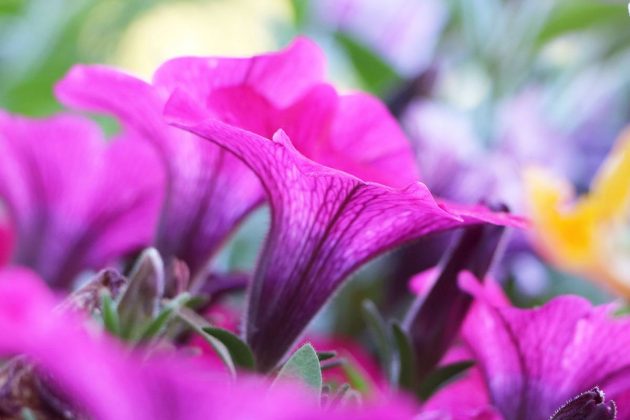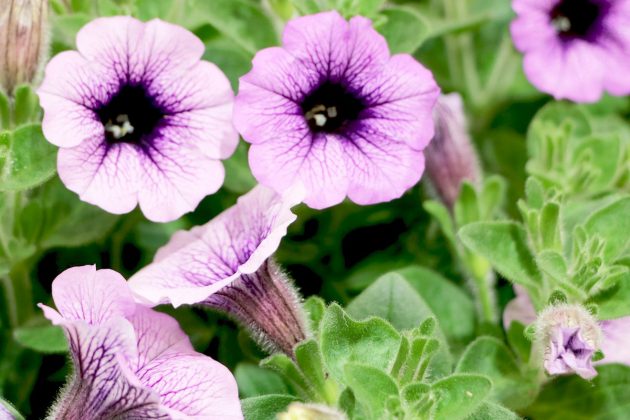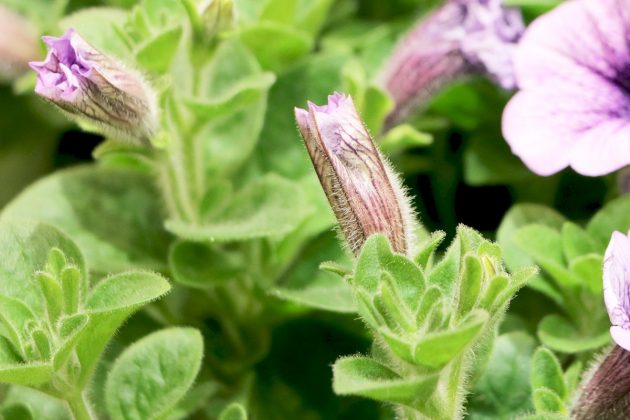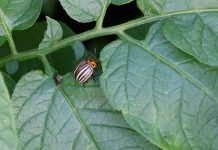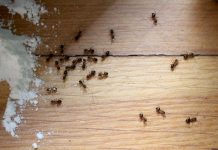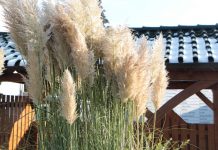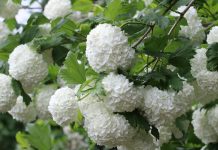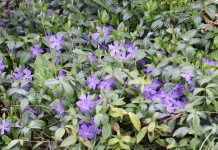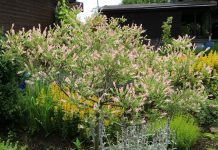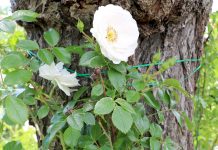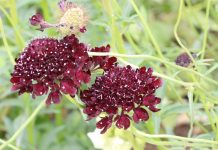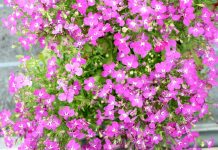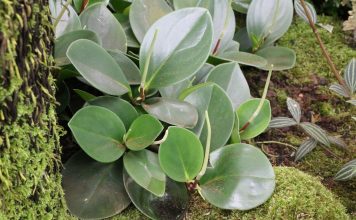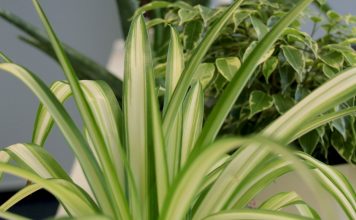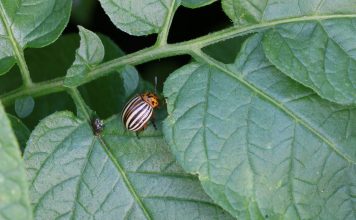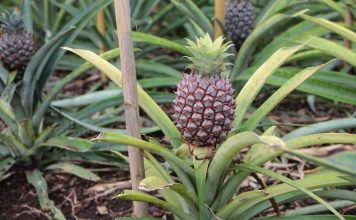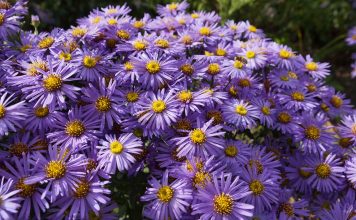Its shining and multifaceted blaze of colour makes the trailing petunia a popular plant. Due to their tendriled growth, these nightshades are often found on balconies and wall bridges. The flowering period of these beauties extends from mid-spring to autumn. In order to optimally support the growth of petunias, some requirements with regard to location and maintenance have to be met.
Plant Profile
Contents
- Family: nightshades
- Height: 20 – 80 cm
- leaves: green with entire margins
- Flowering period: May to October
- Flower colour: dependent on variety
- Original home: South America
- Growth: very proliferous, hanging
Trailing petunias are popular plants enriching balconies and flower beds with their abundance of colours. The lushly blooming nightshades dominate their location from May to October. But their beauty is not for free, because petunias are not easy to care for. Particularly on hot summer days, the plants should not be left to themselves.
Care
The plants are frost-sensitive, but with the correct preparation, they can survive the winter undamaged. The high caring effort is quickly forgotten, as soon as the trailing petunias show their distinctive bloom in the warm spring.
Location
The petunias offered today in the local trade have little in common with their South American roots. In recent decades, renowned experts have succeeded in creating hybrids by crossbreeding. The result is robust plants, which are characterized by their high resistance and their wide colour spectrum.
The colour palette extends over blue, purple, violet to white, pink and red. Specialties like multi-coloured flowers have further extended the colour variety of the nightshades. The petunias are closely related to the tobacco plants and just like them they need a lot of sunlight to develop to their full beauty.
- a sunny spot meets the requirements
- bright half shadow is tolerated
- avoid dark places
Warmth and protection from rain and wind are factors that can positively influence the growth of these ornamental plants. If you do not have a balcony, you can cultivate the hanging plants on wall spurs or in hanging pots. The easy-to-maintain trailing petunias make only small demands on the substrate.
The soil should be permeable and nutritious. Far more than half of these exotic ornamental plants are cultivated in vessels. Conventional flower soils have proven their worth. Older substrate should be mixed with humus annually. Small amounts of sand make sure that the soil can not compress and the supply of water and air is guaranteed.
Watering
This flowery beauty can not cope with a dry substrate. Even short-term drought can cause considerable damage on the trailing petunias. The danger increases with tub plants in the summer. The soil in the pots can absorb only a small amount of moisture, which quickly evaporates in the heat. For this reason a regular checking of the soil is recommended.
The finger test has proven to be successful for this purpose: When the top layer of the substrate feels noticeably dry, you must pour the plant. You can perfectly check this with your index finger. If you allow the soil to dry out completely before you water it again, the soil can only insufficiently store the valuable water. More than 2/3 of the water will drain off unused.
- pouring is done in the morning and late afternoon
- do not pour in the midday sun
- use lime-free water
- avoid waterlogging
The nightshades have fine, sticky glandular hairs on their foliage leaves. To avoid their sticking together, be careful when pouring. Strong rain can also affect the plants. A drainage is helpful with petunias in the bucket to prevent wet feet. A layer of porous material dissipates excess water more quickly from the plant roots and prevents root rot.
For this purpose, a 3 to 5 cm thick layer of porous, non-putrescible materials is spread across the vessel bottom. Among other things, lava grit, clay shards or coarse pebbles have proven their worth for this purpose. A substrate layer should separate roots and drainage from each other.
Fertilizing
The pretty plants transform every hanging pot and every balcony box into a lush flower sea. In order for the plants to achieve this goal, a regular supply of nutrients is useful. Special fertilizer for petunias has the necessary minerals, which support the growing of the blossoming beauty as well as the formation of flowers.
To avoid over-fertilization, the products may only be used according to the packing instructions. Too high doses of nutrients can damage the roots and cause excessive growth of the shoots. Liquid fertilizer should only be administered with the pouring water. If the trailing petunia is wintered, the last fertilizer is delivered at the beginning of August.
Cultivation
With the right care and procedures, trailing petunias are perennial. If you want to reduce your maintenance effort, you can renew the plants from your own seeds annually. In order to obtain the seed, the faded inflorescences must not be removed. Once the seed capsules are mature, remove them with a sharp pair of scissors and store them in a dry, dark place.
The breeding of Petunia is simple:
- January is the right time
- a flat breeding vessel and lean soil are needed
- sprinkle the fine seed and cover it only with a very thin layer of substrate
- the soil must not dry
- spray it regularly with low-lime water
- a bright, warm window sill is the ideal location
- avoid full sunshine and active heat sources
High humidity ensures fast and reliable germination. With a simple trick, a mini-greenhouse can be established on the window sill.
- spread skewers on the edge of the planter
- stretch a transparent, perforated foil over it
- the foil must not touch the substrate
In such a cultivation of seeds, rotting earth is a frequently occurring problem. To prevent this, you should take off the foil for a few minutes every day and keep the soil slightly moist, but not wet. As soon as the young seedlings have reached a size of about 3 to 5 cm, the foil isn’t needed anymore.
After two pairs of leaves have formed, the young petunias are piqued and placed in separate planters. In order not to damage the fine roots, you should use a spoon to remove the seedlings from the old substrate. The exotic nightshades can stay on the window sill or in the warm greenhouse until they are moved to the garden.
Planting and repotting
Trailing petunias are not exactly in a hurry to move to the open air. Only after the Ice Saints should the cold-sensitive plants be moved to their final location. Many of the young plants are not used to direct sunlight. If this is not taken into account, discolouration and burnings occur on the foliage leaves.
The plant parts do not regenerate themselves, only new shoots will let the exotics shine again in full splendor. Self-drawn petunias can slowly get used to the UV radiation in warm spring. For this purpose the young plants spend a few hours outdoors, as long as the weather is appropriate.
Due to their long shoots, trailing petunias need an elevated place. The best way to meet these requirements is by using hanging pots or balcony boxes. As already mentioned, a drainage at the bottom of the vessel must not be missing. In addition, it is recommended to have a saucer for the pots. In multi-family houses uncontrolled outflowing water has already caused some neighborhood disputes.
When planting and repotting:
- use fresh, humus-rich substrate
- the planting bucket should have about 3 cm more circumference than the root ball
- place the plants into the soil until the upper root edge is just underneath the surface
- when you fill in the soil, remove cavities by pressing carefully
You should give perennial plants a new vessel immediately after they leave the winter quarters. The roots are freed from the old substrate and placed in lukewarm water for about 15 minutes. This way, the petunias, which will be weakened by the winter, can sufficiently suck up the valuable liquid and have an ideal prerequisite for the replanting to the open air. When differently coloured trailing petunias share one planting pot, they create an awesome impression. A minimum distance of about 30 cm should be maintained between the plants.
Cutting
A thinning cut is not required for trailing petunias. If, on the other hand, weakened inflorescences are regularly removed, the plant stimulates the formation of new buds. Ill, weakened and dead shoots should be removed immediately. This contributes to a healthy appearance. For the wintering, the shoots are shortened to a length of 15 to 30 cm in autumn.
Wintering
Trailing petunias prefer to spend the cold season in a warm, bright place. Even before the first cold, the plants must move to the protected area. Before transplanting, it is worth investigating the plants for pests and diseases. Remove diseased plants immediately to protect the remaining specimens.
The following care measures have proven themselves during the winter break:
- avoid direct proximity to active heat sources
- do not allow drafts to occur
- pour petunias in the winter months
- do not fertilize
As soon as the edge of the vessel is detached from the soil, you must pour the plant. Waterlogging must be avoided in order to minimize the risk of root rot.
Multiplication
These popular balcony plants can not only be multiplied with seeds, but also with cuttings. At the beginning of summer, well-developed, about 8 cm long head-pieces are cut off from the mother plant with sharp scissors. The lowest pairs of leaves are removed, so that the cutting can invest all its energy into the formation of the roots. At the same time, this measure prevents a potential mould formation.
- use small pots to allow the cuttings to stand one by one
- lean cultivation soil is required
- the location must be warm and wind-protected
- avoid exposure to the midday sun
- keep the substrate evenly moist
- avoid waterlogging
- a greenhouse or foil increases the humidity
After the appearance of new leaves the root formation is completed. The young trailing petunias are repotted into fresh, humus-rich soil. Plants that have been multiplied this way, will not bloom until the following year.
Pests
Powdery mildew and aphids can diminish the flowering beauty of plants. In a “petunia group” it is difficult to recognize infected plants. For this reason, it is important to separate the affected specimens immediately. If the entire balcony box is affected, measures can be taken to fight the problem.
Aphids
For many gardeners, these malicious insects are old acquaintances. The cell-juice sucking insects are not selective when choosing a host plant. Even a dry weather or wet-cold weather does not keep away these pests, which are only a few millimeters in size. The insects are contaminating the undersides of the leaves, which makes it more difficult to find them.
You’ll rather find the sticky remnants of the aphids, the honeydew. Many ants in the immediate vicinity of the plants can also be an indication of aphid attack. The treatment with proven household remedies is difficult on petunias. For example, showering with a sharp water jet not only sweeps away the pests, but also affects the plant leaves.
- regularly pour and spray dilute nettle brew onto the leaves
- carefully wipe off the shoots with mild soaps
- use natural enemies, such as ladybugs and green lacewing larvae
- fight a strong attack with insecticides
Powdery mildew
A fungal pathogen that appears as a white sward on the surface of leaves. Later the foliage becomes discoloured and dries off. Powdery mildew is a “nice weather fungus”, which is particularly affecting weakened plants in long-lasting drought periods. Pour the plants regularly and sprinkle them with a milk-water mixture. Dispose of contaminated plant parts via household waste.
Varieties
Only few plants can match the colour diversity of petunias. The numerous hybrid varieties differ in their flower colour and size. Popular varieties of trailing petunias are for example.
Trailing petunias “Carillon Zauberglöckchen”
- the flower colour varies between yellow, red and blue
Trailing petunias “Celebration Salmon”
- resistant species with a strong, bushy growth
- the flowers stand out with their red tones
Trailing petunias “Duet Double Petunie”
- sensitive variety, which is noticeable by up to 13 cm big flowers
- the flower colour is pink with white tips
Trailing petunias “Villa Nova”
- bushy growing and with large, filled flowers, this variety will convince you with its wind and weather resistance
Trailing petunia “Bianca”
- double-filled, large flower in white
- has a strong, bushy growth

